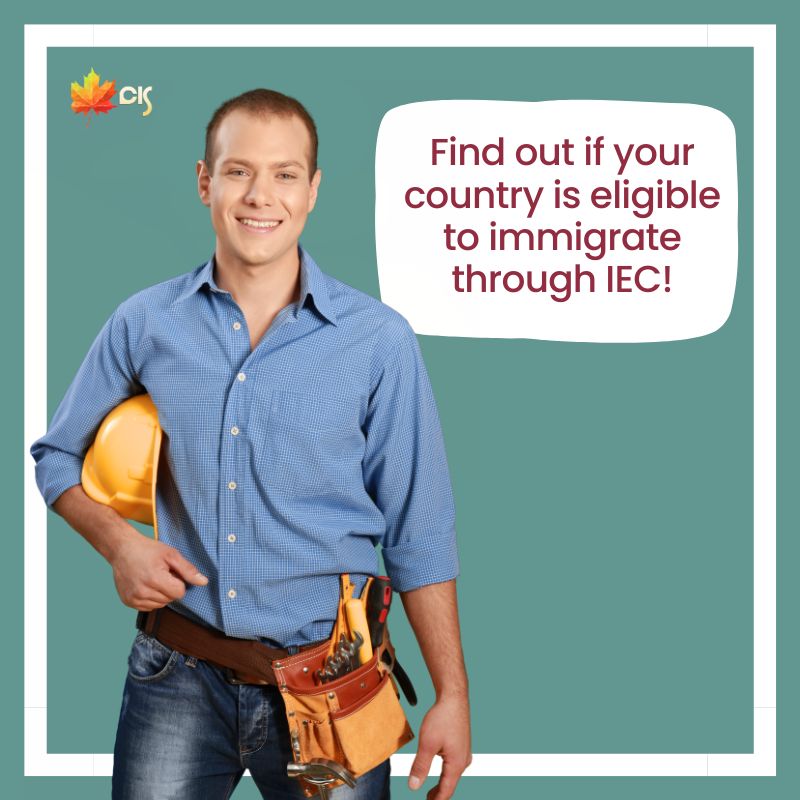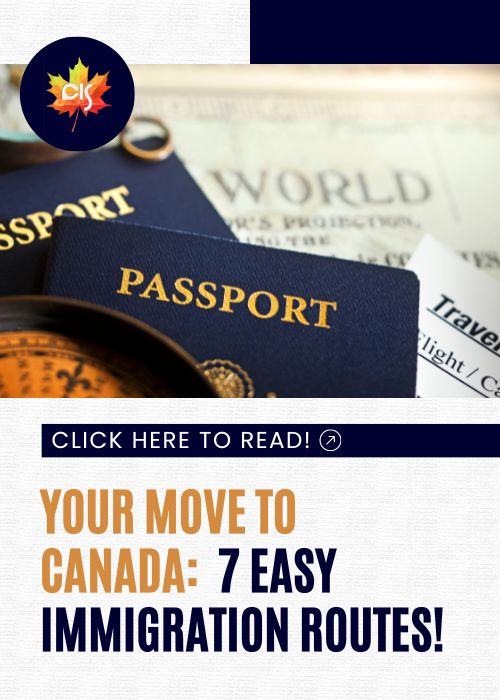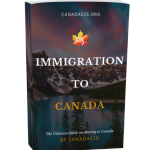International Experience Canada (IEC): all you need to know
Home » Blog » Work in Canada » All About International Experience Canada (IEC)
But how is it possible for Canada to accept this huge number of immigrants annually?
Well, there are various programs to immigrate to Canada. It can be objective-based (e.g., live, work, visit, and study) or duration-based (e.g., permanent or temporary).
This article will discuss one of the temporary residency options called International Experience Canada; IEC from zero to hero. Let’s get started! 😉
Table of Contents
👷♂️ What is International Experience Canada (IEC)?
International Experience Canada (IEC) is one of Canada’s immigration programs that typical immigrants give the slightest attention to. Yet, it includes an efficient and lucrative set of temporary residency programs that you can take advantage of, especially when you are a careful decision-maker (or if you’re generally adventurous).
If you want to work or travel in Canada temporarily, IEC is your best go-to option. Eligible foreigners are authorized to apply for a Canadian work permit without having Labour Impact Market Assessment (LMIA). In addition, you are allowed to live and work in Canada for a maximum of 2 years. This is possible thanks to Canada’s international agreement with multiple countries! See EIC Eligibility.
Keep in mind: there are plenty of high-paying jobs for foreigners in Canada – make sure to check them out!
The selection of applicants happens through a randomized draw system. Much like other immigration programs, not everyone who expresses interest is automatically granted an IEC Work Permit. Interested applicants should verify their qualifications depending on the program they opt for, not to mention Canada’s agreement with their country of origin.
🛫3 Types of IEC Programs
There are three types of programs under IEC. These are Working Holiday, Young Professionals, and International Co-op.
Working Holiday Program
To have the freedom to work in Canada as you travel and explore the country is the primary goal of this program. This is ideal if you want to have complete travel plus work experience or fund your trip. Successful applicants will have an open work permit which enables them to find their employer. With this permit, you have the flexibility to change employers and jump from one location to another.
Typically, you don’t need a job offer to be eligible for the program. But because of the pandemic, all applicants must have a valid job offer. In addition, some employers may require a medical examination.
Young Professionals Stream
This program is perfect for young foreign nationals who want to have professional work experience in Canada. Individuals under this program are given an employer-specific work permit. This means you are not allowed to change your employer nor jump locations during your stay in Canada.
A job offer is required to be considered for this program. You must also have National Occupation Classification (NOC) Skill Level 0, A, or B. NOC Level C may qualify if presented with a post-secondary diploma, certificate, or degree.
International Co-op or Internship
If you’re a student seeking an internship abroad, this program is for you. Similar to the Young Professionals Program, successful applicants under International Co-op are given employer-specific work permits.
You must be a student currently enrolled in a post-secondary institution or university to be eligible for this stream. In addition, a valid job offer for a work placement internship in Canada is a must.
☑️ IEC Eligibility: Who can Participate in International Experience Canada Programs?
Suppose you have all the qualifications discussed in the three programs above. In that case, they will not be honored if you’re not using any of Canada’s Recognized Organizations (RO) or if your country of citizenship does not have an agreement with Canada.
In addition, only IEC participants are eligible to join and apply for an IEC work permit.

Using ROs is the only option for IEC applicants whose country of citizenship is not included in the participating list of countries above. Some of the individuals who belong to the participating countries consider using ROs for other IEC-related services.
Below are some of Canada’s Recognized Organizations and their basic information.
Recognized Organization (RO) | Description | Type of IEC | Age Requirement | Eligible Country |
AIESEC Canada | A non-profit organization that aims to develop youth leadership | Young Professionals | 18 to 30 | IEC Countries, India, Brazil |
GO International | An organization that offers work and travel opportunities | Working Holiday | 18 to 35 | IEC Countries, USA |
International Association for the Exchange of Students for Technical Experience (IAESTE) | An association that offers opportunities in technical career profession | Young Professionals | 18 to 35 | IEC Countries IAESTE Country Partners |
International Rural Exchange (IRE) | A Canadian organization that offers paid placements related to agriculture and horticulture | Young Professionals, Working Holiday | 18 to 35 | IEC Countries |
Memorial University of Newfoundland (MUN) | University that offers Working Holiday internships for students and graduates | Working Holiday, International Co-op | 18 to 35 | IEC Countries |
Stepwest | An organization that offers work experiences (e.g. Paid Ski Resort Jobs) | Young Professionals, Working Holiday | 18 to 35 | IEC Countries |
SWAP | An organization that Working Holiday assists with IEC opportunities | Young Professionals Working Holiday | 18 to 35 | United States of America IEC Countries |
University of British Columbia | University that offers internships for students and graduates | Young Professionals | 18 to 35 | IEC Countries, Brazil, China, Iceland, India, Pakistan, Singapore, USA |
University of New Brunswick | University that provides academic placements, internships and research | Young Professionals, International Co-op | 18 to 30 | IEC Countries |
| Country or Territory | Type of IEC | Type of Visa | Age Limit | Maximum Validity |
| Andorra | Working Holiday | Open | 18-30 | 12 months |
| Australia | Working Holiday | Open | 18-35 | 24 months |
| Young Professionals | Employer-specific | 18-35 | 24 months | |
| International Co-op | Employer-specific | 18-35 | 24 months | |
| Austria | Working Holiday | Open | 18-30 | 12 months |
| Young Professionals | Employer-specific | 18-35 | 12 months | |
| International Co-op | Employer-specific | 18-35 | 6 months | |
| Belgium | Working Holiday | Open | 18-30 | 12 months |
| Chile | Working Holiday | Open | 18-35 | 12 months |
| Young Professionals | Employer-specific | 18-35 | 12 months | |
| International Co-op | Employer-specific | 18-35 | 12 months | |
| Costa Rica | Working Holiday | Open | 18-35 | 12 months |
| Young Professionals | Employer-specific | 18-35 | 12 months | |
| International Co-op | Employer-specific | 18-35 | 12 months | |
| Croatia | Working Holiday | Open | 18-35 | 12 months |
| Young Professionals | Employer-specific | 18-35 | 12 months | |
| International Co-op | Employer-specific | 18-35 | 12 months | |
| Croatia | Working Holiday | Open | 18-35 | 12 months |
| Young Professionals | Employer-specific | 18-35 | 12 months | |
| International Co-op | Employer-specific | 18-35 | 12 months | |
| Czech Republic | Working Holiday | Open | 18-35 | 12 months |
| Young Professionals | Employer-specific | 18-35 | 12 months | |
| International Co-op | Employer-specific | 18-35 | 12 months | |
| Czech Republic | Working Holiday | Open | 18-35 | 12 months |
| Young Professionals | Employer-specific | 18-35 | 12 months | |
| International Co-op | Employer-specific | 18-35 | 12 months | |
| Denmark | Working Holiday | Open | 18-35 | 12 months |
| Estonia | Working Holiday | Open | 18-35 | 12 months |
| Young Professionals | Employer-specific | 18-35 | 12 months | |
| International Co-op | Employer-specific | 18-35 | 12 months | |
| France | Working Holiday | Open | 18-35 | 24 months |
| Young Professionals | Employer-specific | 18-35 | 24 months | |
| International Co-op | Employer-specific | 18-35 | 12 months | |
| Germany | Working Holiday | Open | 18-35 | 12 months |
| Young Professionals | Employer-specific | 18-35 | 12 months | |
| International Co-op | Employer-specific | 18-35 | 12 months | |
| Greece | Working Holiday | Open | 18-35 | 12 months |
| Young Professionals | Employer-specific | 18-35 | 12 months | |
| International Co-op | Employer-specific | 18-35 | 12 months | |
| Hong Kong | Working Holiday | Open | 18-30 | 12 months |
| Ireland | Working Holiday | Open | 18-35 | 24 months |
| Young Professionals | Employer-specific | 18-35 | 24 months | |
| International Co-op | Employer-specific | 18-35 | 12 months | |
| Italy | Working Holiday | Open | 18-35 | 6 months |
| Japan | Working Holiday | Open | 18-30 | 12 months |
| Latvia | Working Holiday | Open | 18-35 | 12 months |
| Young Professionals | Employer-specific | 18-35 | 12 months | |
| International Co-op | Employer-specific | 18-35 | 12 months | |
| Lithuania | Working Holiday | Open | 18-35 | 12 months |
| Young Professionals | Employer-specific | 18-35 | 12 months | |
| International Co-op | Employer-specific | 18-35 | 12 months | |
| Luxembourg | Working Holiday | Open | 18-35 | 12 months |
| Young Professionals | Employer-specific | 18-35 | 12 months | |
| International Co-op | Employer-specific | 18-35 | 12 months | |
| Netherlands | Working Holiday | Open | 18-30 | 12 months |
| Young Professionals | Employer-specific | 18-30 | 12 months | |
| New Zealand | Working Holiday | Open | 18-35 | 23 months |
| Norway | Working Holiday | Open | 18-35 | 12 months |
| Young Professionals | Employer-specific | 18-35 | 12 months | |
| International Co-op | Employer-specific | 18-35 | 12 months | |
| Poland | Working Holiday | Open | 18-35 | 12 months |
| Young Professionals | Employer-specific | 18-35 | 12 months | |
| International Co-op | Employer-specific | 18-35 | 12 months | |
| Portugal | Working Holiday | Open | 18-35 | 24 months |
| Young Professionals | Employer-specific | 18-35 | 24 months | |
| International Co-op | Employer-specific | 18-35 | 24 months | |
| San Marino | Working Holiday | Open | 18-35 | 12 months |
| Slovakia | Working Holiday | Open | 18-35 | 12 months |
| Young Professionals | Employer-specific | 18-35 | 12 months | |
| International Co-op | Employer-specific | 18-35 | 12 months | |
| Slovenia | Working Holiday | Open | 18-35 | 12 months |
| Young Professionals | Employer-specific | 18-35 | 12 months | |
| International Co-op | Employer-specific | 18-35 | 12 months | |
| South Korea | Working Holiday | Open | 18-30 | 12 months |
| Spain | Working Holiday | Open | 18-35 | 12 months |
| Young Professionals | Employer-specific | 18-35 | 12 months | |
| International Co-op | Employer-specific | 18-35 | 12 months | |
| Sweden | Working Holiday | Open | 18-35 | 12 months |
| Young Professionals | Employer-specific | 18-35 | 12 months | |
| International Co-op | Employer-specific | 18-35 | 12 months | |
| Switzerland | Young Professionals | Employer-specific | 18-35 | 18 months |
| International Co-op | Employer-specific | 18-35 | 18 months | |
| Taiwan | Working Holiday | Open | 18-35 | 12 months |
| Young Professionals | Employer-specific | 18-35 | 12 months | |
| International Co-op | Employer-specific | 18-35 | 12 months | |
| United Kingdom | Working Holiday | Open | 18-30 | 24 months |
The agreements Canada has with these countries are reciprocal bilateral. These nations offer the same privilege to Canadian citizens.
❓ How to Apply for International Experience Canada?
What is your main reason for applying for an IEC work permit? Is it to fulfill university internship requirements, travel and explore Canada, or gain professional experience? From here, you will find out what type of program and work permit fits you. See Three (3) Types of IEC Programs.
Does your country of citizenship belong to the list of International Experience Canada Participating Countries? Are you going to utilize ROs? Equip yourself with the correct information and gather all the requirements needed. You may choose to consult with experts to facilitate your IEC application.
Average Salary: $28,889 (per year)
Requirements: A minimum of a high school diploma or GED certificate.
IEC conducts random draws in selecting applicants. You will receive an invitation to apply (ITA) once you get selected. You only have 10 days to accept the invitation and 20 days to submit an online application for a work permit. If you don’t get selected, your application will be returned to the pool for future draws.
🏠 Which is Better? IEC Programs or Permanent Residency Programs
Choosing which visa suits you is based on individuals’ preferences and objectives. For example, some may aim directly for PR while others may only need a temporary visa; perhaps some may want to try Canada out first before applying for PR.
Below is a quick comparative overview of IEC programs and PR programs.
| International Experience Canada (IEC) | Permanent Residency Programs | |
|---|---|---|
| Application Timeline | As early as 10 to 15 days after submitting application | Can take from 6 months to 5 years |
| Validity |
|
|
| Rights and Benefits | Limited to Basic Worker Rights | Have almost the same rights as Canadian Citizens |
It’s better to thoroughly do your research in deciding which visa and program are right for you. You may seek help from a family or friend. Or you may reach out to immigration agencies or organizations like Canada CIS to help answer any questions you may have.
🛤️ Other Canada Immigration Pathways
If you are curious about other immigration pathways, worry no more!
Canada offers a diverse range of immigration pathways beyond the well-known routes, providing opportunities for individuals with varying skills, backgrounds, and circumstances to make Canada their new home.
These alternative pathways play a crucial role in the country’s commitment to attracting a skilled and diverse pool of talent.
Prospective immigrants can explore these options based on their qualifications, circumstances, and aspirations for a new life in Canada. As immigration policies may evolve, it is advisable to consult immigration experts like CanadaCIS for the latest information and guidance. 🌐🍁









